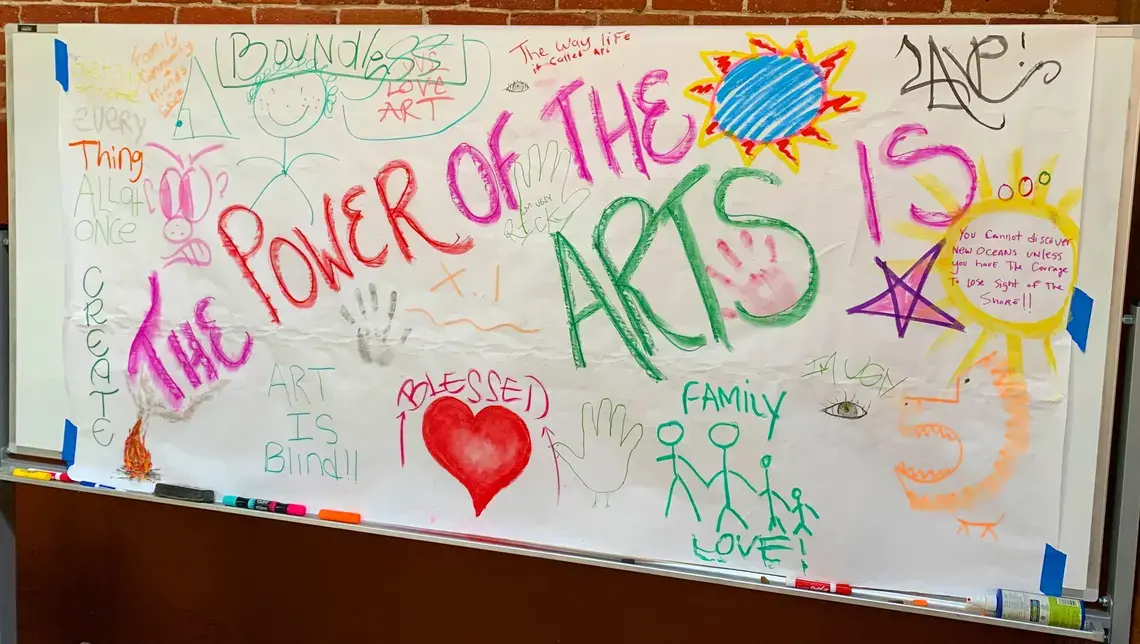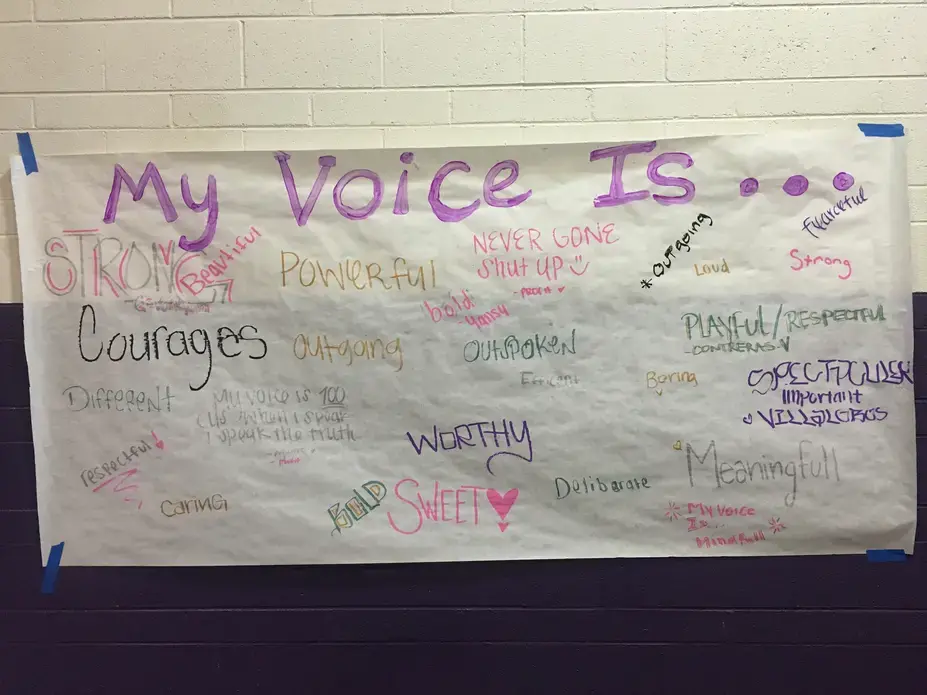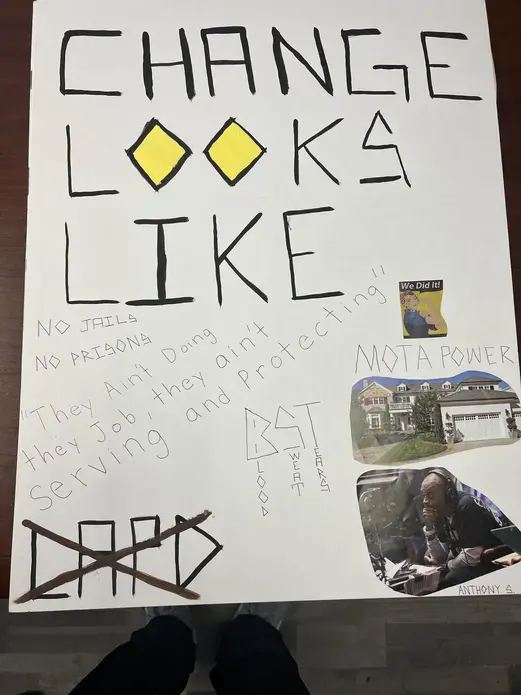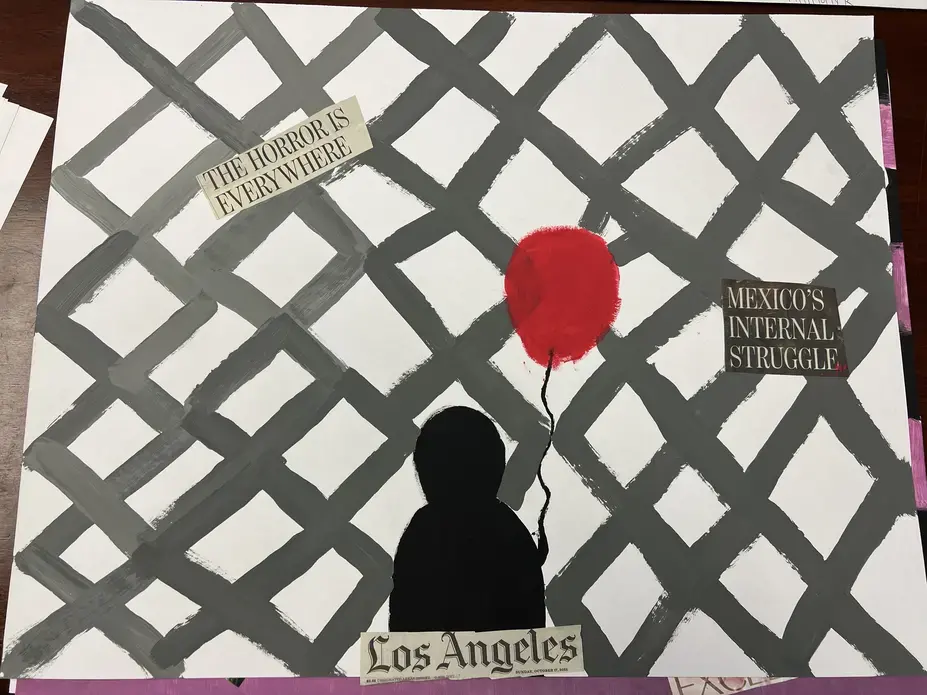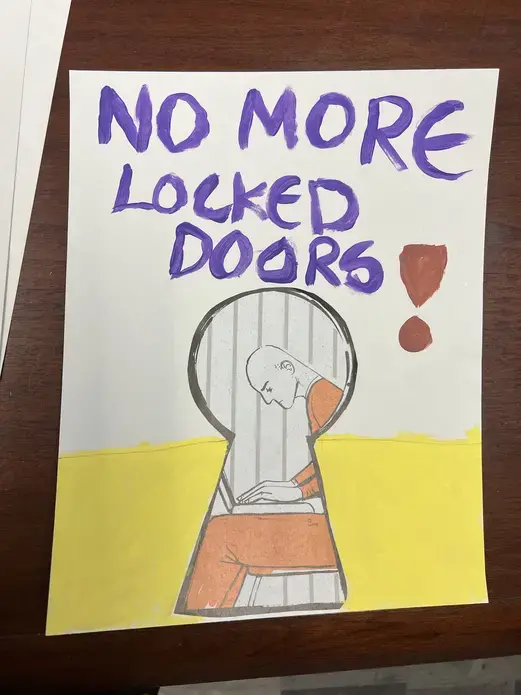This unit was created by the Art Attacks! Program from Creative Acts in southern California, as part of the 2021 cohort of The 1619 Project Education Network. It is designed for facilitation across approximately four sessions that are two hours each.
Objectives
Participants will…
1. Increase knowledge of the benefits of civic engagement for communities.
2. Connect historical events with current circumstances and encourage students to take action through analysis of primary source documents, podcast episodes from The 1619 Project, poetry, and music.
3. Increase students’ awareness of the power of their voices through historical examples of youth and BIPOC-led movements.
4. Create protest signs that reflect the impacts of underreported issues they explored in the unit and/or actions they think should be taken to combat injustices in their communities.
Unit Overview
Art Attacks! uses arts-based exercises and techniques to teach civic history and engagement to youth in juvenile camps and halls. The program is specifically designed to cater to the needs of incarcerated youth, but can be easily adapted for other young adult audiences.
The Art Attacks! Program, which was created by the nonprofit organization Creative Acts, is designed to civically engage students in youth prisons in Los Angeles county. Using artistic approaches, such as theatre exercises, written and drawn art and music, we impart the importance of civic engagement in a relevant, impactful way. We engage students in discussions about how voting can be a tool to make change in participants’ communities. We also use the Arts as a vessel to teach the reality of American history, and to guide participants in better understanding the roots and branches of the “justice” system and the struggle for civil rights.
Students engage with multiple texts and guided discussions, practice mindfulness and personal reflection, and reflect their learning using multiple art forms. Students ultimately apply their learning by creating protest signs that can be used to challenge injustices in their communities.
Performance Task
The culmination of this program will be the creation of protest signs that students will create using art supplies. Signs should demonstrate what systemic changes have been identified as most meaningful to students and how they will become involved in their communities when returning to their homes.
Four-day unit plan for teaching artists and other facilitators, including pacing, texts and multimedia resources, guiding questions for group discussions, outlines for mindfulness and theater exercises, and a performance task for the unit. Download below, or scroll down to read the complete unit plan.
Unit Resources
| Resources from The 1619 Project | "The Fight for a True Democracy:" Episode 1 of the 1619 podcast from The New York Times "The Birth of American Music:" Episode 3 of the 1619 podcast from The New York Times "Mass Incarceration" by Bryan Stevenson Late 1773: poem by Eve L. Ewing |
| Supplemental resources | Reimagining Prison Web Report from Vera Institute of Justice Incarceration Trends in California from Vera Institute of Justice Poems by Phyllis Wheatly from the Poetry Foundation |
| Videos | "Why Treaties Matter," from NPR "Journey from Mexico," from PBS Learning Media |
CCSS.ELA-LITERACY.CCRA.R.1
Read closely to determine what the text says explicitly and to make logical inferences from it; cite specific textual evidence when writing or speaking to support conclusions drawn from the text.
CCSS.ELA-LITERACY.CCRA.R.2
Determine central ideas or themes of a text and analyze their development; summarize the key supporting details and ideas.
CCSS.ELA-LITERACY.CCRA.R.9
Analyze how two or more texts address similar themes or topics in order to build knowledge or to compare the approaches the authors take.
CCSS.ELA-LITERACY.CCRA.SL.1
Prepare for and participate effectively in a range of conversations and collaborations with diverse partners, building on others' ideas and expressing their own clearly and persuasively.
CCSS.ELA-LITERACY.CCRA.SL.2
Integrate and evaluate information presented in diverse media and formats, including visually, quantitatively, and orally.
National Core Arts Standards, Anchor Standard #1
Generate and conceptualize artistic ideas and work.
National Core Arts Standards, Anchor Standard #7
Perceive and analyze artistic work.
National Core Arts Standards, Anchor Standard #11
Relate artistic ideas and works with societal, cultural and historical context to deepen understanding.
Performance Task
The culmination of this program will be the creation of protest signs that students will create using art supplies. Signs should demonstrate what systemic changes have been identified as most meaningful to students and how they will become involved in their communities when returning to their homes.
"I want this program implemented at all Juvenile Halls." - Participant from Barry J. Nidorf Juvenile Hall


